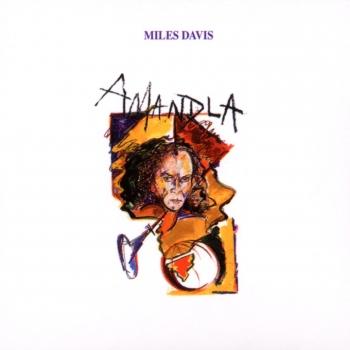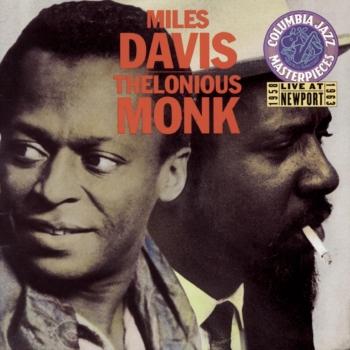
The Complete Prestige 10-Inch LP Collection (Mono Remastered) Miles Davis
Album info
Album-Release:
2016
HRA-Release:
02.06.2016
Album including Album cover Booklet (PDF)
I`m sorry!
Dear HIGHRESAUDIO Visitor,
due to territorial constraints and also different releases dates in each country you currently can`t purchase this album. We are updating our release dates twice a week. So, please feel free to check from time-to-time, if the album is available for your country.
We suggest, that you bookmark the album and use our Short List function.
Thank you for your understanding and patience.
Yours sincerely, HIGHRESAUDIO
- 1 Stop 04:05
- 2 Go 03:29
- 3 Wailing Wall 03:57
- 4 Thinking Of You 02:44
- 5 Morpheus 02:23
- 6 Whispering 03:04
- 7 Down 02:53
- 8 Nice Work If You Can Get It 02:47
- 9 Maxology 05:44
- 10 Conception 04:05
- 11 My Old Flame 06:33
- 12 Dig 07:37
- 13 It's Only A Paper Moon 05:23
- 14 Bluing 09:56
- 15 Blue Room 02:50
- 16 Out Of The Blue 06:15
- 17 Tasty Pudding 03:23
- 18 Floppy 06:00
- 19 Willie The Wailer 04:28
- 20 For Adults Only 05:32
- 21 When Lights Are Low 03:27
- 22 Tune Up 03:54
- 23 Miles Ahead 04:31
- 24 Smooch 03:04
- 25 Four 04:03
- 26 Old Devil Moon 03:24
- 27 Blue Haze 06:09
- 28 Blue 'N' Boogie 08:15
- 29 Walkin' 13:22
- 30 Solar 04:44
- 31 You Don't Know What Love Is 04:20
- 32 I'll Remember April 07:51
- 33 Airegin 05:01
- 34 Oleo 05:11
- 35 But Not For Me 05:46
- 36 Doxy 04:52
- 37 Bags' Groove 11:11
- 38 Swing Spring 10:42
- 39 Bemsha Swing 09:29
- 40 The Man I Love 07:55
- 41 Odjenar 02:54
- 42 Hibeck 03:07
- 43 Yesterdays 02:24
- 44 Ezz-thetic 02:55
- 45 Indian Summer 02:36
- 46 Duet For Saxophone And Guitar 02:37
Info for The Complete Prestige 10-Inch LP Collection (Mono Remastered)
Miles Davis is at once one of the most musically influential and most popular artists in the history of jazz. And his legendary Prestige recordings are amongst the all-time classics in the genre. Just in time to celebrate what would have been Miles' 90th birthday, Miles Davis: The Complete Prestige 10-Inch LP Collection presents all ten 10-inch LPs on which Miles Davis appeared as a leader for Prestige Records (1951 1954), plus a bonus LP featuring Davis as a guest artist with Lee Konitz, faithfully reproduced on 10-inch vinyl, with the original LP cover artwork and liner notes included. Also included is a 16-page booklet featuring rare photographs and insightful new notes by GRAMMY Award-winning author Ashley Kahn, as well as a collectible print of a painting by Miles.
Nick Phillips, the producer of the box set, remarks, 'This collection presents an exciting and important period in Miles Davis’ development as an artist; one in which he is clearly distinguishing himself from the other bop stylists of the era and is rapidly developing the uniquely lyrical and powerful voice that remains so instantly recognizable and influential to this day.”
The complete list of albums includes: Modern Jazz Trumpets (featuring Dizzy Gillespie, Kenny Dorham and Fats Navarro); The New Sounds; Blue Period; Miles Plays the Compositions of Al Cohn; Miles Davis Quartet; Miles Davis All Star Sextet; Miles Davis Quintet; Miles Davis with Sonny Rollins; Miles Davis All Stars, Vol. 1; Miles Davis All Stars, Vol. 2 and Lee Konitz’s The New Sounds.
Digitally remastered
Trumpeter Miles Davis grew up in East St. Louis, Illinois, just across the river from St. Louis, Missouri. His parents were affluent, and had the means to support his musical studies as a boy. He began playing the cornet at age nine, and received his first trumpet at around twelve or thirteen. He studied classical technique, and focused mainly on using a rich, clear tone, something that helped define his sound in later years.
As a teenager, he played in various bands in St. Louis, which was rich with jazz, as big bands often stopped there on tours throughout the Midwest and southern states. The most important experience he had was when he was asked to play in the Billy Eckstine band for a week as a substitute. The group included Charlie Parker, Dizzy Gillespie, and Sara Vaughan. After playing with these stars, Davis knew he had to move to New York to be at the heart of the jazz scene.
In Pursuit of Parker:
In 1944 Davis moved to New York City where he had earned a scholarship to study trumpet at the Juilliard School of Music. Upon arriving however, he sought after Charlie Parker, and meanwhile spent all of his time in jazz clubs listening to bebop. He was transfixed on the music, and grew utterly bored with his classical studies. After less than a year at Juilliard, he dropped out and tried his hand at performing jazz.
Although not particularly stunning, his playing was good enough to finally attract Charlie Parker, and Davis joined his quintet in 1945. He was often criticized for sounding inexperienced, and was compared unfavorably to Dizzy Gillespie and Fats Navarro, who were the leading trumpeters at the time. Both boasted stellar technique and range, neither of which Davis possessed. In spite of this, he made a lasting impression on those who heard him, and his career was soon set aloft.
Cool Jazz and a Rise to Fame:
Encouraged by composer and arranger Gil Evans, Davis formed a group in 1949 that consisted of nine musicians, including Lee Konitz and Gerry Mulligan. The group was larger than most bebop ensembles, and featured more detailed arrangements. The music was characterized by a more subdued mood than earlier styles, and came to be known as cool jazz. In 1949 Davis released the album Birth of the Cool (Captiol Records).
Change of artistic direction became central to Davis’ long and increasingly influential career. After dabbling in hard bop as a leader on four Prestige recordings featuring John Coltrane, he signed with Columbia records and made albums that featured Gil Evans’ arrangements for 19-piece orchestra. These were Miles Ahead, Porgy and Bess, Sketches of Spain, and Quiet Nights. He rose in popularity with these recordings, in part due to his signature sound, which he often enhanced by using a Harmon mute.
Kind of Blue and Beyond:
In 1959 Davis made his pivotal recording, Kind of Blue. It was a departure from all of his previous projects, abandoning complicated melodies for tunes that were sometimes only composed of two chords. This style became known as modal jazz, and it allows the soloist expressive freedom since he does not have to negotiate complex harmonies. Kind of Blue also featured John Coltrane, Cannonball Adderley, and Bill Evans. The album is one of the most influential in jazz, and is Columbia Records’ best-selling jazz record of all time.
In the mid 1960s Davis changed directions again, forming a group with Herbie Hancock, Wayne Shorter, Tony Williams, and Ron Carter. This group was known for the excellence of each individual member, and also for its unique performance approach. Each night the tunes would sound different, as the musicians would sometimes only loosely adhere to the song structures, and often transition from one right into the next. Each player was given the chance to develop his solos extensively. Like all of Davis’ previous groups, this quintet was highly influential.
Late Career:
Despite health problems, drug addiction, and strained personal relationships, Davis continued to play, changing his approach with each new project. In the late 60s and 70s, he began to experiment with electronic instruments, and grooves that were tinged with rock and funk music. Two famous recordings from this period are In a Silent Way and Bitches Brew. By the time the 1980s rolled around, Davis was not only a jazz legacy, but a pop icon, whose music, persona, and fashion style were legendary.
Davis died in 1991, as perhaps the most influential jazz artist ever. His vast body of work continues to be a source of inspiration for today’s musicians. (Jacob Teichroew, About.com Guide)
Booklet for The Complete Prestige 10-Inch LP Collection (Mono Remastered)






































